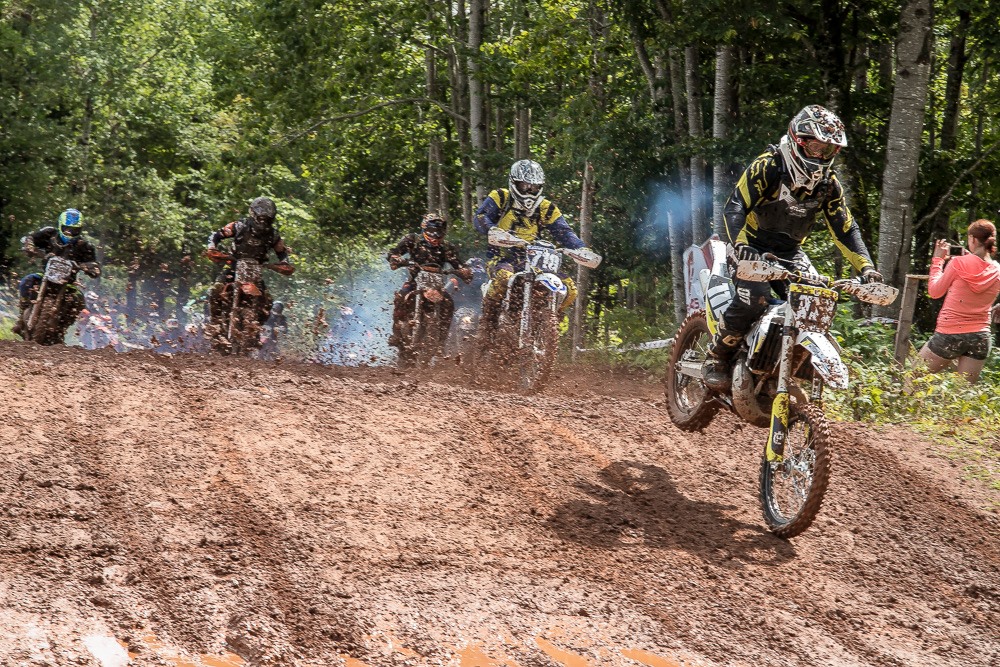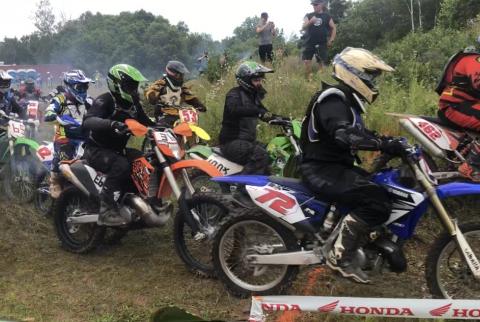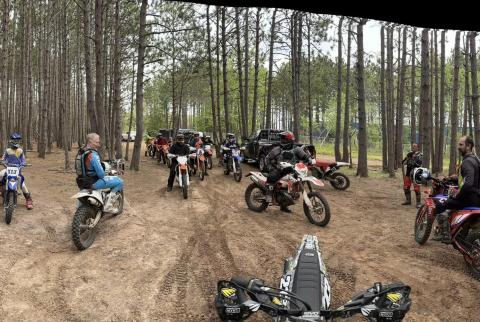Blog
Why does NSORRA have closed course ride parks?
Have you ever wondered why NSORRA works in partnership with landowners and funding partners to maintain ride parks? And why do kids have to be six in order to become NSORRA members and participate in events?
Development of ride parks
In December 2005, the same year the Nova Scotia Off Road Riders Association was formed, the Province of Nova Scotia introduced new laws regarding the operation of Off Highway Vehicles (OHVs) including dirt bikes, ATVs, side-by-sides and snowmobiles. One notable change included the development of closed courses. These closed courses are designed to ensure that youth who operate OHVs are doing so in a safe and controlled environment.
A closed course is officially defined as “an area of land being used for an organized OHV event during which access to the area by motor vehicles is limited.” In practical terms, a closed course is a facility which is designed and managed to provide a safe, controlled environment where trained OHV users 6 years of age and older can ride OHVs.
Courses have controlled entrance and exit points and one-way traffic patterns. All other potential access points are gated or managed to limit the access by other motor vehicles registered pursuant to the Motor Vehicle Act. Access will also be limited for non-motorized users. A trained official and a trained first responder will be present and accessible to users.
A closed course is a facility which is designed and managed to provide a safe, controlled environment where trained OHV users 6 years of age and older can ride OHVs.

Requirements for Using a Closed Course
- No child under the age of 6 can ride on a closed course.
- Youth aged 6 to 15 must be in sight of a trained parent or legal guardian at all times. Parent or legal guardian can also designate a trained official or other responsible adult 19 or over to supervise their child on their behalf).
- Youth aged 6 to 15 must be on OHVs of an appropriate size, in accordance with the Off-highway Vehicles Act and its regulations.
- As per the schedule outlined in the Off-highway Vehicles Safety and Training Regulations, all users must be trained before using the course.
- Approved helmets (DOT, CSA, SNELL, or BSI) must be worn at all times when riding.
- Additional protective equipment including eye protection, long pants, long sleeves, gloves and boots are required for riders aged 15 and under and are highly recommended for all OHV users. Chest, elbow, leg and other protective equipment is optional but may be deemed necessary by course operators.
- Users must follow all course rules of operation.
- All users of a closed course must have their OHVs registered.
- Effective April 1, 2007 all machines must have 3rd party liability insurance coverage for an amount that will be provided in the regulations. An operator may decide to have 3rd party liability insurance as a prerequisite to use their closed course before April 1, 2007.
- No vehicle that has an exhaust system other than that provided by the manufacturer or equivalent standard if replaced is allowed on a closed course.
- It is an offense to operate an OHV while under the influence of alcohol or drugs.
- Passengers on OHVs are not recommended.
- All components of the Off-highway Vehicles Act also apply.
Landowners and Funding Partners
NSORRA works with wonderful landowners to ensure our members have safe, fun places to ride across the province. Our landowners include:
- Stephen Parkinson, South Alton Ride Park
- Sean Lacey, Hiltz Road Ride Park
- Vincent Van Zutphen, Craigmore Creek Ride Park
- Dave Beaver, Economy Ride Park (opening soon!)
To ensure quality ride parks, we also rely on our funding partners. They include:
- Department of Lands and Forestry Off Highway Vehicle Infrastructure Fund (OHVIF) - Province of Nova Scotia
- Moto Canada
- Department of Communities, Culture and Heritage (CCH) - Province of Nova Scotia
Thank you to all who contribute to making off road riding enjoyable across the province.

